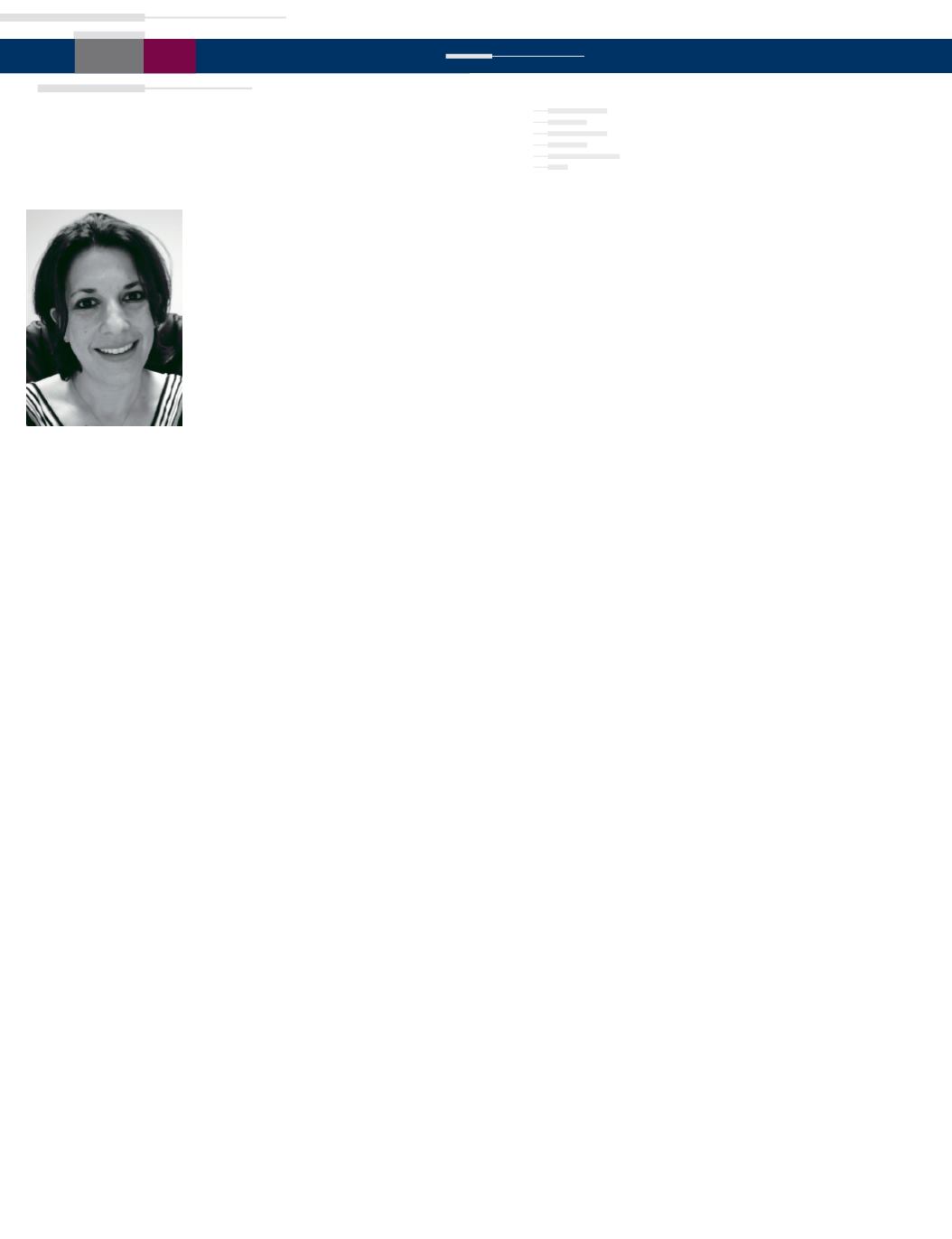

BIOPHYSICAL SOCIETY NEWSLETTER
4
AUGUST
2016
Valeria Vásquez
was raised in Caracas, Venezuela.
Her father is a geologist and shared his love of sci-
ence with her starting when she was very little. “I
could listen forever to him talk about every single
mountain formation while we were on road trips
in Venezuela,” she shares. Vásquez also admires
her mother, who worked with underprivileged
children throughout her career as a kindergar-
ten teacher. Vásquez became enamored with the
scientific process as an elementary school student.
“My school held a yearly science festival where
we had to work in teams to develop a scientific
project that would be presented at the end of each
year,” she says. “My best friend’s mother, who was
an engineer, chaperoned us throughout the year
and taught us how to apply the scientific method.
Formulating hypotheses and designing experi-
mental plans hooked me immediately.”
Vásquez completed her undergraduate studies at
the Universidad Central de Venezuela in Caracas.
She then went on to pursue her PhD in the lab
of
Eduardo Perozo
at the University of Virginia,
Charlottesville, completing her studies in 2008.
While she was working in Perozo’s lab, Vásquez
met
José Faraldo-Gómez
and
Sudha Chakrapani
,
with whom she has remained friends over the
years. Vásquez served as Faraldo-Gómez’s men-
tor while he did wet lab work for a short time in
Perozo’s lab. “Valeria is an outstanding scientist
with an excellent training in biophysics and
biochemistry—but she is also a wonderful person
with a very positive disposition and the right tem-
perament for a career in science,” he says. “What I
remember the most about spending time with her
in the lab is how careful, thoughtful, and hard-
working she is. [Also] her homemade arepas are
phenomenal, particularly combined with copious
amounts of Rioja.”
Chakrapani recalls her time working with Vásquez
fondly. “Valeria was a lot of fun to work with. She
is a well-rounded person, brilliant, meticulous,
and extremely passionate about science, politics,
and her family,” she says. “She is very insightful,
full of new ideas, and absolutely relentless when
it comes to trying new approaches to study a very
difficult scientific problem.”
For her postdoctoral research, she worked in the
lab of
Miriam B. Goodman
at Stanford Univer-
sity. “We identified arachidonic acid-containing
phospholipids as crucial modulators of touch
sensitivity in
C. elegans
touch receptor neurons,”
Vásquez says.
She is now an assistant professor in the Depart-
ment of Physiology at the University of Tennessee
Health Science Center in Memphis. “My current
research is centered on understanding ion channel
function of mechanosensitive channels using two
main avenues: (1) in vivo approaches to study
the effect of bioactive lipids on channel function
using the animal model
C. elegans
, and (2) in
vitro biochemical and biophysical approaches to
elucidate the mechanisms of ion channel activa-
tion and identify lipids that directly modulate
their function,” she explains.
Vásquez credits several people in her life for
helping lead her to this particular area of study.
The first was her husband,
Julio Cordero-Morales
.
“Since we were in college he was — and still is —
super passionate about ion channels and excitable
cells. He would always tell our trainees, ‘There is
nothing more exciting than looking at an enzyme
to work in real time,’ like we do when we patch
clamp,” she says. “My friend and collaborator
Boris Martinac
taught me how to patch clamp
spheroplasts while studying mechanosensitive
ion channels. My PhD advisor Eduardo Perozo
taught me that without dynamics, structures are
just snapshots. Miriam Goodman taught me that
the in vivo context always matters.”
The most rewarding aspect of her work is the
sharing and exchange of information. “I get to
learn from everyone, whether they are in my field
or not,” she explains. “What I like the most is
discussing ideas with labmates and colleagues to
challenge and/or postulate hypotheses. It is very
rewarding to find something new and exciting,
whether it goes with or against my hypothesis.”
Vásquez faced challenges related to her work–
family balance during her postdoctoral fellowship.
“The biggest challenge so far was coming back
to the lab after a two-month maternity leave.
Biophysicist in Profile
VALERIA VÁSQUEZ
Valeria Vásquez


















